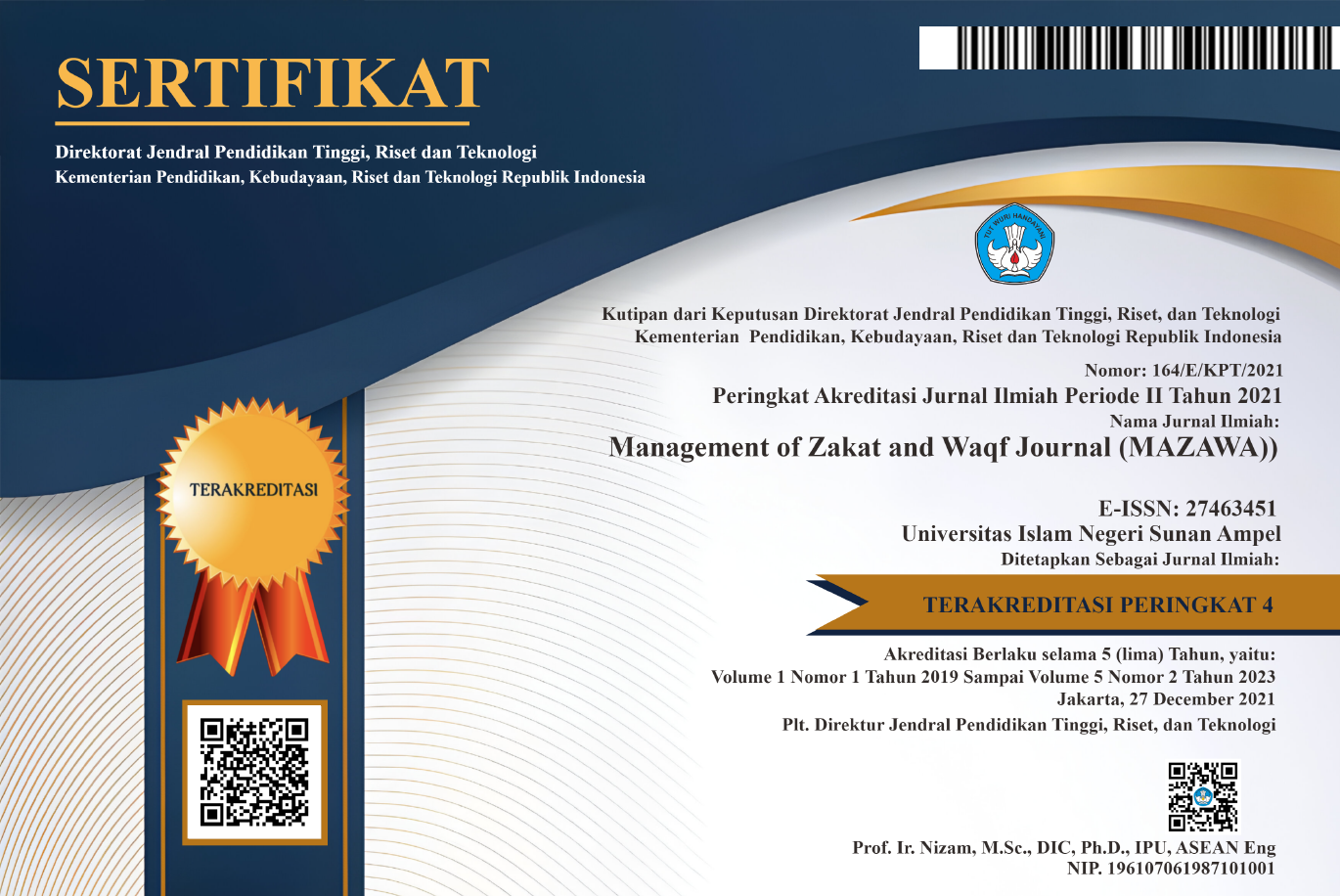Resilience of Sukuk Innovation Through Cash Waqf Linked Sukuk as an Instrument for Indonesia's Economic Recovery
DOI:
https://doi.org/10.15642/mzw.2023.4.2.149-167Keywords:
CWLS, Sukuk, WaqfAbstract
Post-pandemic, the impact of the weakening global economy as well as in Indonesia, was felt by the public, plus the threat of an economic recession. The government is required to make a funding adjustment policy. One of the funding adjustment policies is changing the APBN allocation used to deal with post-pandemic socio-economic problems. The government has launched a new creative investment innovation that utilizes movable waqf as its object into state sukuk. Based on these problems, the research aims to offer a solution that is Cash Waqf Linked Sukuk in assisting government funding for Indonesia's economic recovery. The research method used is a qualitative research type of literature study with a descriptive approach as an analytical tool. The research data comes from secondary data in the form of Waqf Law, DSN-MUI Fatwa, government regulations regarding economic improvement plans and productive waqf books as well as previous research from scientific articles/journals. The results show that Cash Waqf Linked Sukuk can contribute to economic recovery through 2 sure channels; 1) Cash Waqf Linked Sukuk can assist government funding in supporting APBN funds through the development of educational facilities, health facilities, and public infrastructure. Second, Cash Waqf Linked Sukuk can at the same time provide support for economic equality in order to overcome socio-economic inequality through community empowerment from yield funds provided by the government.
Downloads
Downloads
Published
How to Cite
Issue
Section
License
Copyright (c) 2023 Citra Mulya Sari

This work is licensed under a Creative Commons Attribution-NonCommercial-ShareAlike 4.0 International License.





